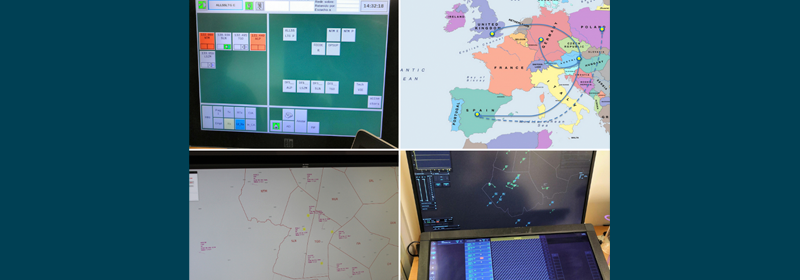- A project within the SESAR European research programme has been validating a solution that allows air traffic control to be delegated from one control centre to another, decoupling service provision from any specific location. This demonstrates the feasibility of virtual centre operations, making air traffic control interoperable in the future, with a flexible and scalable infrastructure that enables cross-border operations

The SESAR 2020 project PJ.10-W2 PROSA is being led by DFS, the German air navigation service provider. DFS validated the concept in the sub-project (termed Solution 93) for the first time, together with air navigation service providers (ANSPs) from the UK (NATS) and Poland (PANSA), as well as the technology vendors Frequentis and Indra. Additionally, the Italian ANSP, ENAV, evaluated the impact on the controller working position, in relation to the air traffic controller performance, as well as safety issues. The validation was carried out in very challenging conditions in light of COVID-19.
One airspace, three countries, three control centres
In a real-time simulation, air traffic controllers from three different European locations controlled the traffic in two sectors of upper airspace over southern Germany, as well as in Zurich airspace. The physical centres were located in Germany (Langen), the UK (Southampton), and Poland (Warsaw). Two cases were tested: The first case trialled the transfer of consolidated traffic from one control centre to another at night, when there is less traffic; the second simulated the transfer of air traffic control to another centre in a control centre failure scenario (contingency).
"The project demonstrates that creating flexibility in airspace surveillance using virtual centres is feasible. Such centres could be used as a contingency solution in the future, too," says Jörg Bergner, project manager at DFS. "The next step is to confirm the results in further validations, where cases – even closer to the real controller working position – will be investigated."
A pan-European infrastructure
The project sets up a pan-European infrastructure to connect the three control centres using data centres of Indra in Madrid and Frequentis in Vienna. Using the iTEC air traffic management system, Indra provided recorded radar and flight plan data that was fed into the system using a real-time simulator. Indra also equipped the controller working positions in the UK and Poland with the components for voice communication.
DFS developed an individual prototype of a working position based on its Phoenix air traffic control system. Frequentis provided the IT voice communication data centre infrastructure, as well as the voice solution components, which are used by DFS at their controller working positions. Furthermore, Frequentis provided a central middleware that enabled all prototypes at the different locations to be connected.
About SESAR
As the technological pillar of the Single European Sky initiative, SESAR aims to modernise and harmonise air traffic management (ATM) in Europe. The SESAR Joint Undertaking (SESAR JU) was established in 2007 as a public-private partnership to support this endeavour. It does so by pooling the knowledge and resources of the entire ATM community in order to define, research, develop and validate innovative technological and operational solutions. The SESAR JU is also responsible for the execution of the European ATM Master Plan which defines the EU priorities for R&D and implementation. Founded by the European Union and Eurocontrol, the SESAR JU has 19 members, who together with their partners and affiliate associations will represent over hundred companies working in Europe and beyond. The SESAR JU also works closely with staff associations, regulators, airport operators and the scientific community.
PJ.10-W2 PROSA has received funding from the SESAR Joint Undertaking under the European Union’s Horizon 2020 research and innovation programme under grant agreement No 874464.